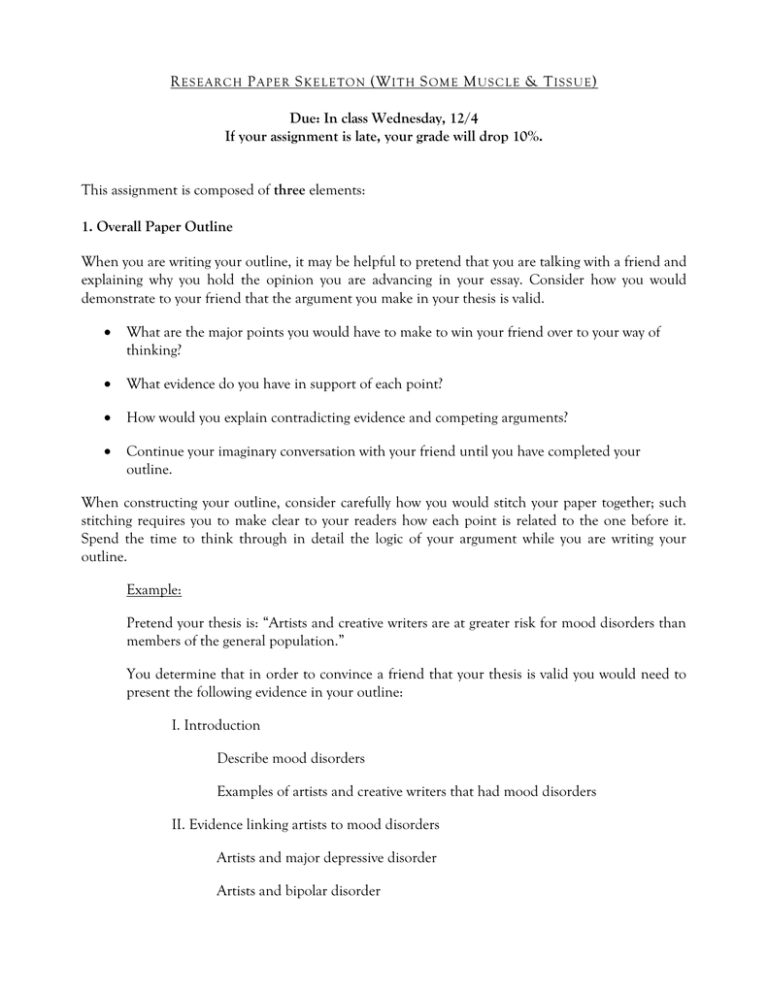Research Paper Skeleton
advertisement

R ES EA R C H P A P E R S K E L E TO N (W I T H S O M E M US C L E & T I S S U E ) Due: In class Wednesday, 12/4 If your assignment is late, your grade will drop 10%. This assignment is composed of three elements: 1. Overall Paper Outline When you are writing your outline, it may be helpful to pretend that you are talking with a friend and explaining why you hold the opinion you are advancing in your essay. Consider how you would demonstrate to your friend that the argument you make in your thesis is valid. What are the major points you would have to make to win your friend over to your way of thinking? What evidence do you have in support of each point? How would you explain contradicting evidence and competing arguments? Continue your imaginary conversation with your friend until you have completed your outline. When constructing your outline, consider carefully how you would stitch your paper together; such stitching requires you to make clear to your readers how each point is related to the one before it. Spend the time to think through in detail the logic of your argument while you are writing your outline. Example: Pretend your thesis is: “Artists and creative writers are at greater risk for mood disorders than members of the general population.” You determine that in order to convince a friend that your thesis is valid you would need to present the following evidence in your outline: I. Introduction Describe mood disorders Examples of artists and creative writers that had mood disorders II. Evidence linking artists to mood disorders Artists and major depressive disorder Artists and bipolar disorder III. Evidence linking creative writers to mood disorders Creative writers and major depressive disorder Creative writers and bipolar disorder IV. Evidence suggesting why mood disorders may enhance creativity Components of mania and creativity Components of depression and creativity V. Conclusions 2. Introduction In one substantive, coherent, perfectly grammatical paragraph: Present your thesis and motive while orienting readers and defining important key terms (if there are any). By motive, I mean the reason why readers should care about your thesis. Why is your thesis important? The introduction of an academic research paper is not a place to discuss personal reasons for being interested in the topic, but rather to make a case for why your topic is important and currently relevant. 3. Conclusion Write the substantive, coherent, perfectly grammatical conclusion that would serve as your research paper’s last paragraph. Here are some guidelines for writing a strong conclusion. Restate your thesis, summarizing the evidence that supports it. Do not introduce new evidence in the conclusion. Do not lead the reader through pages of literature review only to leave them with a conclusion that is unrelated (or only tangentially related) to the research that you have reviewed! You can offer future suggestions for research, but again, be sure to base any suggestions for future research on what has been reviewed in your paper. Finally, restate the importance and relevance of the topic of your paper (without overstating the importance or implications of your thesis). Leave the readers feeling that they have learned something very worthwhile.



